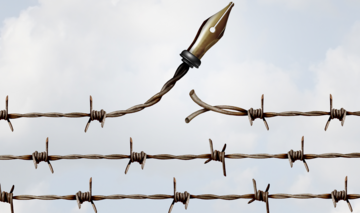
The unlawful deployment of spyware against journalists, the use of abusive lawsuits against journalists to hamper their investigative work, and the precarious situation of many journalists in exile are some of the main concerns expressed in the report. Other increasing threats to press freedom highlighted in the document include intimidation, detention, restrictive legislation, media capture, and attacks on public service media. This diversity in the hostile actions against journalism mirrors the number of journalists killed and street violence against them, which decreased in 2023.
The report underscores that media freedom and the digital security of journalists continued to be threatened by the ongoing use of spyware technology to surveil journalists and media actors, and accountability for reported abuses continued to be evasive. It also points out the unprecedented number of media workers in Europe – from Russia and Belarus in particular - driven into exile abroad due to physical risk to their life and liberty, legal prosecution, threats and intimidation, which often continue once they are in exile against them and their families. Another trend highlighted in the report is that media freedom was hindered by abusive legal actions, including Strategic Lawsuit Against Public Participation (SLAPPS), initiated by politicians and business actors based on national laws on the protection of reputation, aiming to harass journalists and media by exposing them to criminal convictions, the payment of high compensation for damages and heavy fines.
In 2023, Russia’s war of aggression against Ukraine continued to have significant effects on media freedom and the safety of journalists. Two journalists - Bohdan Bitik and Arman Soldin - were killed while reporting in Ukraine and several other journalists were injured. Another worker of the media, the security guard Pal Kola, was killed in an attack to the Top Channel TV station in Albania. As of 31 December 2023, 55 journalists and media workers were in detention in Council of Europe member states- including the Ukrainian territories occupied by Russia - and 65 in Russia and Belarus, where the crackdown on independent journalists intensified. Russia returned to the practice of institutionalised hostage-taking by arresting the US journalists Evan Gershkovich and Alsu Kurmasheva. In 2023, five cases of impunity for murder of journalists were added to the Platform, those concerning Sokratis Giolias and Giorgos Karaivaz (Greece), Aleh Byabenin (Belarus), Milan Pantić (Serbia) and Yuri Shchekochikhin (Russia). By the end of the year, there were 30 alerts of impunity for murder concerning 49 media workers active on the platform. The case of the Ukrainian journalist Viacheslav Veremii was declared closed.
The 2024 report spells out a list of recommendations for the Council of Europe and its members, as well as the EU institutions and the EU Member States. These recommendations include a vigorous promotion and monitoring of the Recommendation on Strategic Lawsuits Against Public Participation (SLAPPs) and the European Media Freedom Act (EMFA), member states’ full compliance with judgments of the European Court, the adoption of National Action Plans for the Safety of Journalists, the strengthening of the Rule of Law Report of the European Commission by developing its coordination and communication with civil society groups.
The publication presented the annual assessment of threats to media freedom and safety of journalists in Europe in 2023, by the partner organisations of the Safety of Journalists Platform. The Platform was set up in 2015 by the Council of Europe in cooperation with associations of journalists and leading international NGOs active in the field of the freedom of expression, with the objective of improving the protection of journalists and better addressing threats and violence against media professionals in Europe.
Tags: media freedom Media freedom Safety of journalists EuropeThe content of this article can be used according to the terms of Creative Commons: Attribution-NonCommercial 4.0 International (CC BY-NC 4.0) . To do so use the the wording "this article was originally published on the Resource Centre on Media Freedom in Europe" including a direct active link to the original article page.

